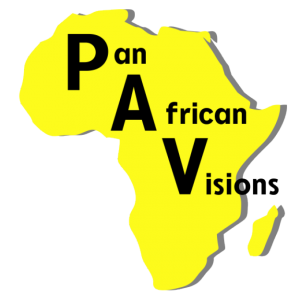JOHANNESBURG, South Africa, April 17th, 2018, -/African Media Agency (AMA)/- It used to take months to be able to say whether a particular treatment for cancer was working – wasting precious time that might otherwise have been used to save a patient’s life. Now, using analytics, we can predict that treatment’s effectiveness within days.
When addressing the question of what to expect in the tech space in 2018, the sky is, quite literally, the limit.
The truth is, AI is already doing things we never before would have dreamed possible. From writing music to creating videos, we are achieving milestones that we previously would have considered strictly human. And in Africa, this powerful technology will soon be used to address pressing societal issues.
And yes, it will even help to save lives.
New sources of data
One of the major forces driving the world of tech and AI is the increasing volume and availability of data.
Take financial inclusion as an example. Traditionally, banks would rely on certain data and documentation – like credit scores, ID documents and lending history – to analyse risk and grant credit to a customer. But this approach excluded a large portion of the population, who haven’t had the opportunity to build up a credit history for whatever reason – no documentation, no credit history. Now FinTech providers in East Africa are analysing mobile data – for example, how often a person tops up their airtime – as a basis for granting micro-loans and making lending decisions. This will empower those who have traditionally been excluded from the financial services market because they now have the means to access funding and start their own businesses, buy property or send their children to school.
At the same time, we’ve developed technology that allows us to analyse more data than ever before. And thanks to a massive improvement in compute power, analytical solutions can now analyse these massive volumes of data at blistering speed. Data scientists can develop machine learning models in minutes, which can enable businesses to deliver results quickly.
A great example of the technology that allows this is SAS VIYA, which is an end-to-end analytical platform. The platform fuels the analytics lifecycle from data preparation to model development and, finally, deployment. This is all done from within a single interface.
One feature of the SAS platform that I’m particularly excited about is the ability to analyse images. This capability is already helping when it comes to wildlife conservation. In the past, game rangers had to manually take pictures of particular species of animals and tag them. While this wasn’t part of their core focus, it absorbed a great deal of time. But using SAS’s new technology, they can simply take the picture and allow the AI to classify not only the species of the animal, but other helpful traits such as the gender as well. At the end of the day, this frees up the rangers to tackle more important tasks.
More accurate predictions
While the algorithms used in machine learning have been relatively unchanged for decades, we are now seeing the emergence of new algorithms, such as extreme gradient boosting, which have proven to be very successful in data mining competitions like Kaggle. Check out
this competition by Data Science Nigeria, in which participants are working to build a model to prevent customer churn in the telecoms market. Extreme gradient boosting is a significant development in analytics because it generalises well, enabling more accurate predictions.
Tapping into unstructured data
While we’ve been drawing on structured data sources like transactional data for some time, no-one has really been tapping into unstructured data sources. For example, customer complaints, reviews and other text data sources.
But these two sources, when combined, can be extremely powerful. Say, for instance, you wanted to develop a customer churn prediction model. By including data sources like customer complaints, as opposed to just structured and traditional data sources, you can develop a model that is more accurate at predicting churn.
Into the era of deep learning
Deep learning has created a lot of hype and for good reason.
Deep learning is a type of machine learning, based on a set of algorithms that model high-level abstractions in data, by using multiple processing layers with complex structures. Instead of organising data to run through predefined equations, deep learning sets up basic parameters about the data and trains the computer to learn on its own by recognising patterns using many layers of processing. This means it can train computers to perform human-like tasks, such as recognising speech, identifying images or making predictions.
Deep learning is already being used to make significant inroads into areas such as image recognition, fraud detection and the highly regulated credit risk modelling. In fact, SAS is currently working with credit bureau, Equifax, using deep learning techniques in credit risk modelling. The results are promising as the accuracy of the models has improved traditional techniques.
Organisations like Data Science Nigeria are working to speed up the application of machine learning to solve complex societal and business problems. Their approach is to get more people interested and skilled in data science so that Nigeria can become an outsourcing hub for international data science projects. They, too, have turned their focus to financial inclusion.
Bots that understand emotion
Another exciting space in AI is bot technology. Chatbots are programmes that use natural language processing and AI to create conversations between machines and humans.
Instead of having a human respond to complaints or queries, this can now be done by a chatbot to save time and money on mundane and repetitive tasks. For example, responses to queries on bank accounts. Some banks are using bots to advise customers on financial advice and investments.
AI is teaching itself to think
Until now, AI has generally been designed to do specific things like fraud detection. The human ability to perform tasks has always been greater than machines as we can generalise and perform a much wider set of functions.
But incredibly we’re starting to see AI train itself to learn.
In 2016, Google created a programme called AlphaGo. It was capable of beating even the most skilled human players at the ancient Chinese strategy game, Go – considered to be one of the most complicated games on earth.
But this was taken a step further through the creation of AlphaGo Zero, a programme provided with a very limited amount of training data. The idea was that it would learn by playing against itself. Over a period of time, AlphaGo Zero beat AlphaGo.
Essentially, it had taught itself to think.
On the threshold of a future in which machines can think and learn – as we step into 2018 one could literally say nothing is impossible.









